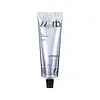What's inside
What's inside
 Key Ingredients
Key Ingredients

 Benefits
Benefits

 Concerns
Concerns

No concerns
 Ingredients Side-by-side
Ingredients Side-by-side

Water
Skin ConditioningPanthenol
Skin ConditioningIsopentyldiol
HumectantCaprylic/Capric Triglyceride
MaskingCetearyl Alcohol
EmollientGlycerin
HumectantCetyl Ethylhexanoate
EmollientCetearyl Olivate
Ethylhexyl Palmitate
EmollientSorbitan Olivate
Emulsifying1,2-Hexanediol
Skin ConditioningPolyglyceryl-10 Decaisostearate
EmollientCetyl Palmitate
EmollientSorbitan Sesquioleate
EmulsifyingSorbitan Palmitate
EmulsifyingCarbomer
Emulsion StabilisingArginine
MaskingAmmonium Acryloyldimethyltaurate/Vp Copolymer
Simmondsia Chinensis Seed Oil
EmollientGlyceryl Stearate
EmollientGlyceryl Caprylate
EmollientSorbitan Oleate
EmulsifyingAllantoin
Skin ConditioningEthylhexylglycerin
Skin ConditioningBeta-Sitosterol
Emulsion StabilisingCaprylyl Glycol
EmollientPolyglyceryl-10 Stearate
Skin ConditioningHydrogenated Lecithin
EmulsifyingDisodium EDTA
Butylene Glycol
HumectantCeramide NP
Skin ConditioningCentella Asiatica Extract
CleansingMelaleuca Alternifolia Leaf Extract
PerfumingGlycosphingolipids
EmollientMadecassic Acid
Skin ConditioningMadecassoside
AntioxidantAsiaticoside
AntioxidantAsiatic Acid
Skin ConditioningWater, Panthenol, Isopentyldiol, Caprylic/Capric Triglyceride, Cetearyl Alcohol, Glycerin, Cetyl Ethylhexanoate, Cetearyl Olivate, Ethylhexyl Palmitate, Sorbitan Olivate, 1,2-Hexanediol, Polyglyceryl-10 Decaisostearate, Cetyl Palmitate, Sorbitan Sesquioleate, Sorbitan Palmitate, Carbomer, Arginine, Ammonium Acryloyldimethyltaurate/Vp Copolymer, Simmondsia Chinensis Seed Oil, Glyceryl Stearate, Glyceryl Caprylate, Sorbitan Oleate, Allantoin, Ethylhexylglycerin, Beta-Sitosterol, Caprylyl Glycol, Polyglyceryl-10 Stearate, Hydrogenated Lecithin, Disodium EDTA, Butylene Glycol, Ceramide NP, Centella Asiatica Extract, Melaleuca Alternifolia Leaf Extract, Glycosphingolipids, Madecassic Acid, Madecassoside, Asiaticoside, Asiatic Acid
Water
Skin ConditioningPanthenol 10%
Skin ConditioningSqualane
EmollientButylene Glycol
Humectant1,2-Hexanediol
Skin ConditioningNiacinamide
SmoothingBambusa Vulgaris Extract
Skin ConditioningHydrolyzed Jojoba Esters
Skin ConditioningAcrylates/C10-30 Alkyl Acrylate Crosspolymer
Emulsion StabilisingAmmonium Acryloyldimethyltaurate/Vp Copolymer
Hydroxyacetophenone
AntioxidantTromethamine
BufferingDipotassium Glycyrrhizate
HumectantEthylhexylglycerin
Skin ConditioningXanthan Gum
EmulsifyingDisodium EDTA
Sodium Hyaluronate
HumectantMadecassoside
AntioxidantAsiaticoside
AntioxidantAsiatic Acid
Skin ConditioningMadecassic Acid
Skin ConditioningCopper Tripeptide-1
Skin ConditioningWater, Panthenol 10%, Squalane, Butylene Glycol, 1,2-Hexanediol, Niacinamide, Bambusa Vulgaris Extract, Hydrolyzed Jojoba Esters, Acrylates/C10-30 Alkyl Acrylate Crosspolymer, Ammonium Acryloyldimethyltaurate/Vp Copolymer, Hydroxyacetophenone, Tromethamine, Dipotassium Glycyrrhizate, Ethylhexylglycerin, Xanthan Gum, Disodium EDTA, Sodium Hyaluronate, Madecassoside, Asiaticoside, Asiatic Acid, Madecassic Acid, Copper Tripeptide-1
 Reviews
Reviews

Ingredients Explained
These ingredients are found in both products.
Ingredients higher up in an ingredient list are typically present in a larger amount.
1,2-Hexanediol is a synthetic liquid and another multi-functional powerhouse.
It is a:
- Humectant, drawing moisture into the skin
- Emollient, helping to soften skin
- Solvent, dispersing and stabilizing formulas
- Preservative booster, enhancing the antimicrobial activity of other preservatives
Ammonium Acryloyldimethyltaurate/Vp Copolymer (let's call it AAVC for short) is a synthetically created polymer. It's used as a film-forming agent and used to thicken the consistency of products.
AAVC is able to increase the consistency and viscosity of products due to its large molecule size. It also prevents ingredients from separating.
Asiatic Acid is a major component of Centella Asiatica Extract. It has wound-healing, anti-inflammatory, and antioxidant properties.
Studies show Asiatic Acid is able to block the pathway for skin inflammation receptors, helping to soothe skin.
As an antioxidant, asiatic acid helps protect our skin against damaging environmental factors.
Learn more about Asiatic AcidAsiaticoside comes from the super popular skin-soothing ingredient, Centella asiatica. It is one of four active compounds found in the extract of Centella Asiatica.
Asiaticoside is an antioxidant and helps with wound healing. It has been shown to increase antioxidant activity during the wound healing process.
Butylene Glycol (or BG) is used within cosmetic products for a few different reasons:
Overall, Butylene Glycol is a safe and well-rounded ingredient that works well with other ingredients.
Though this ingredient works well with most skin types, some people with sensitive skin may experience a reaction such as allergic rashes, closed comedones, or itchiness.
Learn more about Butylene GlycolDisodium EDTA plays a role in making products more stable by aiding other preservatives.
It is a chelating agent, meaning it neutralizes metal ions that may be found in a product.
Disodium EDTA is a salt of edetic acid and is found to be safe in cosmetic ingredients.
Learn more about Disodium EDTAEthylhexylglycerin (we can't pronounce this either) is commonly used as a preservative and skin softener. It is derived from glyceryl.
You might see Ethylhexylglycerin often paired with other preservatives such as phenoxyethanol. Ethylhexylglycerin has been found to increase the effectiveness of these other preservatives.
Madecassic Acid is a major component of Centella Asiatica Extract. It has anti-inflammatory and antioxidant properties.
It is a triterpenoid, meaning it naturally acts as an antioxidant. Antioxidants protect your skin against damage from environmental factors such as pollution and UV.
Studies show Madecassic Acid helps soothe the skin due to its ability to block inflammation pathways.
Learn more about Madecassic AcidMadecassoside comes from the super popular skin-soothing ingredient, Centella asiatica. It is one of four active compounds found in the extract of Centella Asiatica.
Madecassoside has antioxidant, anti-inflammatory, and hydrating properties. It contains fatty acids, amino acids, beta-carotene, and phytochemicals.
One study found using Madecassoside with ascorbic acid helped reduce the signs of aging and improved skin hydration.
Learn more about MadecassosidePanthenol is a common ingredient that helps hydrate and soothe the skin. It is found naturally in our skin and hair.
There are two forms of panthenol: D and L.
D-panthenol is also known as dexpanthenol. Most cosmetics use dexpanthenol or a mixture of D and L-panthenol.
Panthenol is famous due to its ability to go deeper into the skin's layers. Using this ingredient has numerous pros (and no cons):
Like hyaluronic acid, panthenol is a humectant. Humectants are able to bind and hold large amounts of water to keep skin hydrated.
This ingredient works well for wound healing. It works by increasing tissue in the wound and helps close open wounds.
Once oxidized, panthenol converts to pantothenic acid. Panthothenic acid is found in all living cells.
This ingredient is also referred to as pro-vitamin B5.
Learn more about PanthenolWater. It's the most common cosmetic ingredient of all. You'll usually see it at the top of ingredient lists, meaning that it makes up the largest part of the product.
So why is it so popular? Water most often acts as a solvent - this means that it helps dissolve other ingredients into the formulation.
You'll also recognize water as that liquid we all need to stay alive. If you see this, drink a glass of water. Stay hydrated!
Learn more about Water